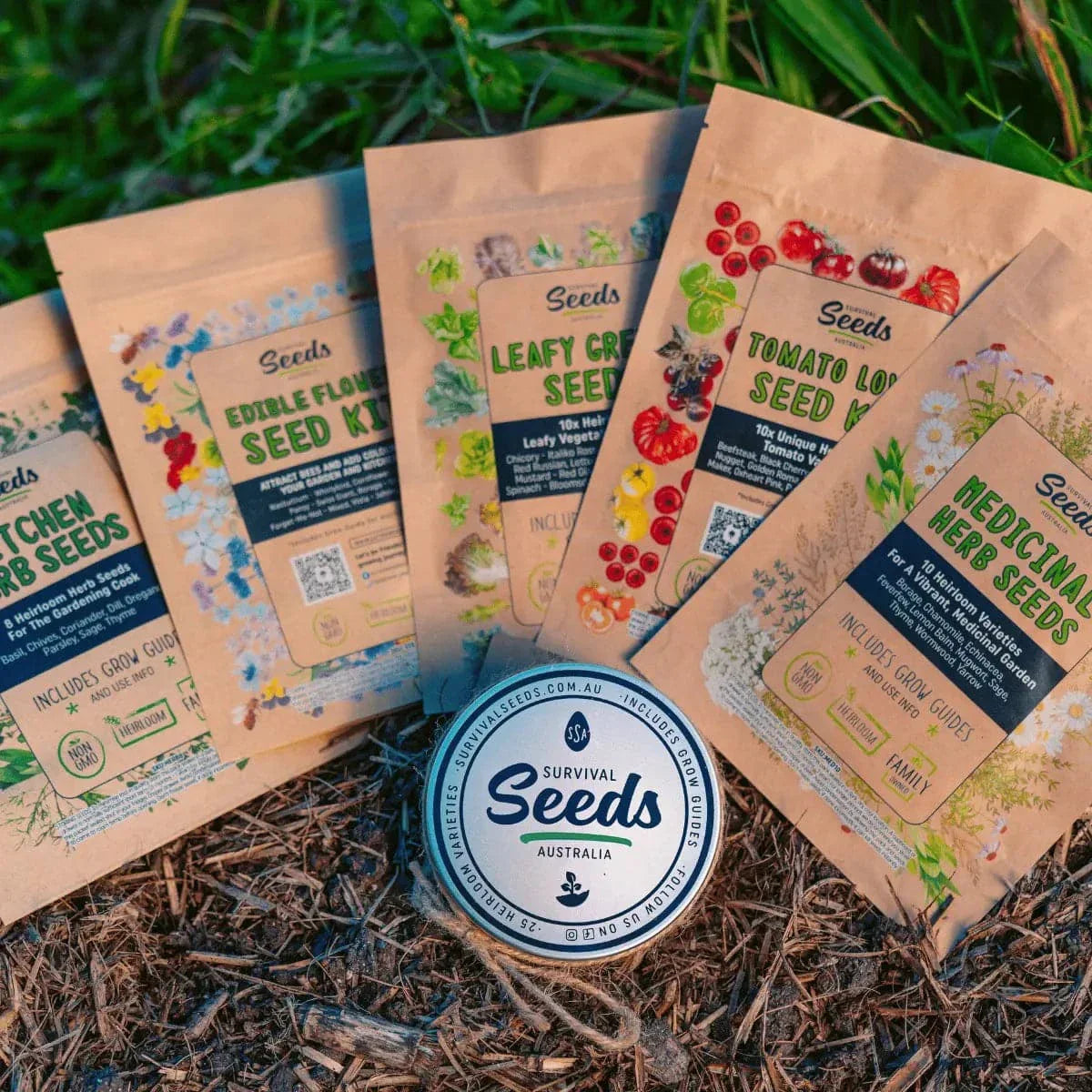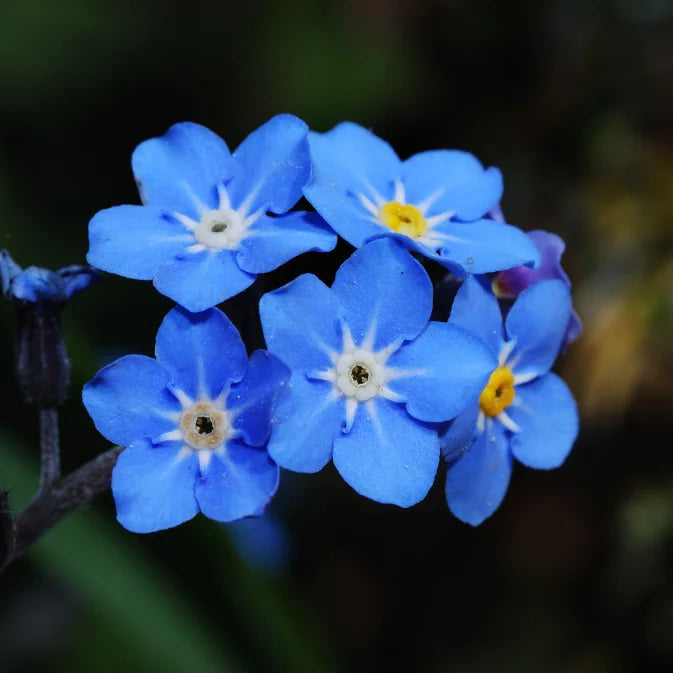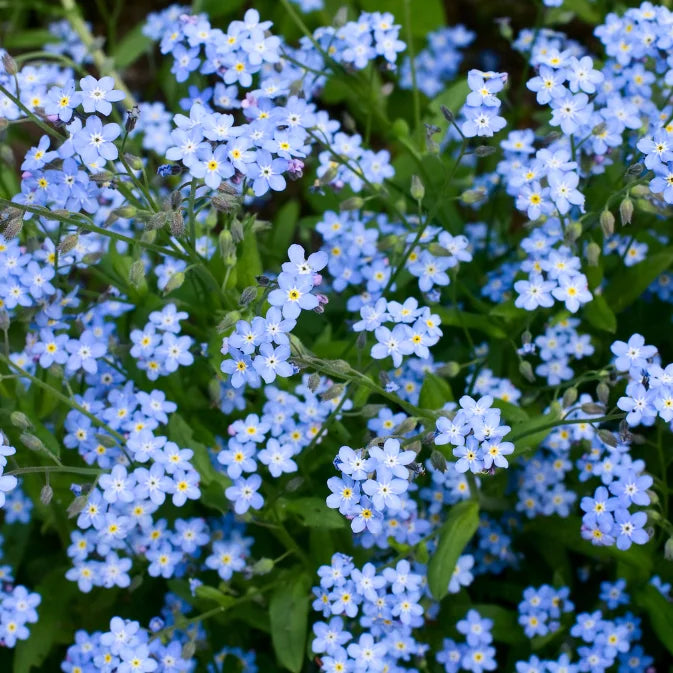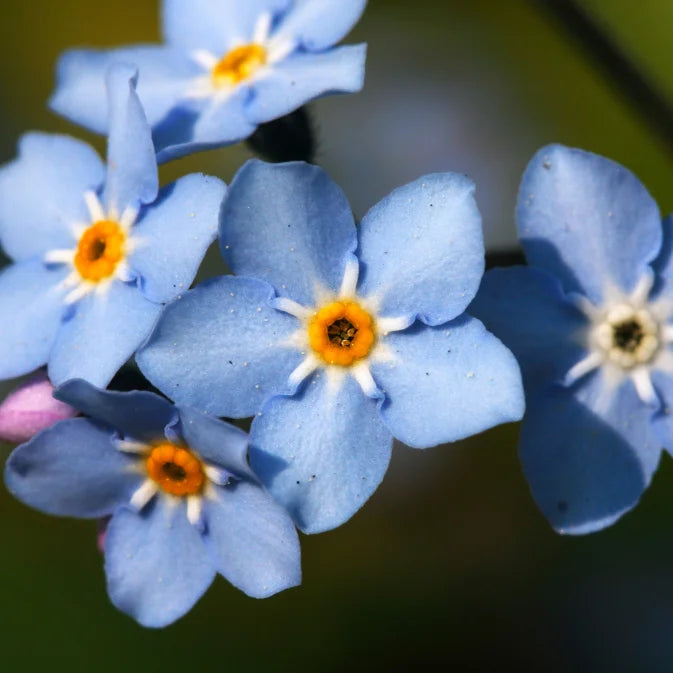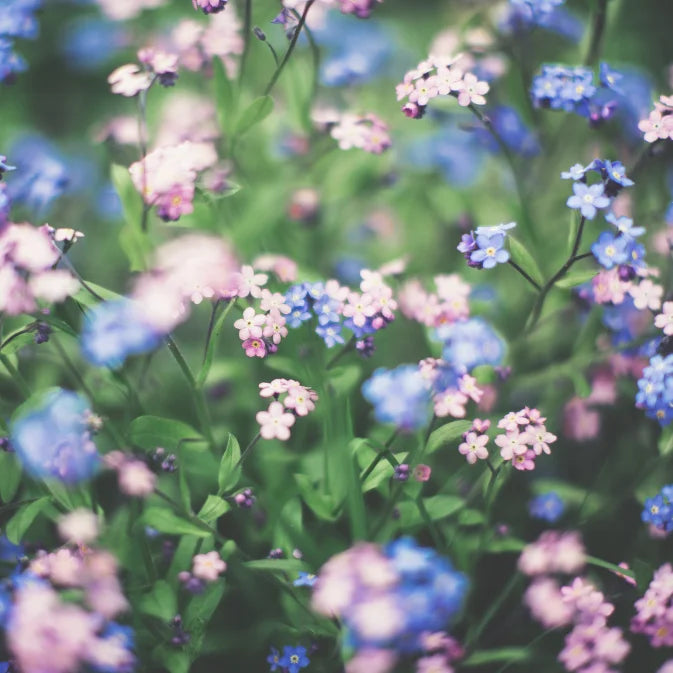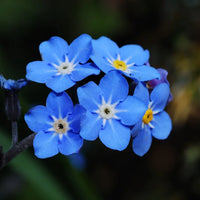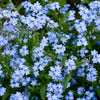Introduction
Forget-me-nots are beloved for their delicate, star-shaped blue flowers and their ability to self-seed, making them a timeless addition to any Australian garden. These low-maintenance plants thrive in cool, shaded areas and are perfect for borders, woodland gardens, and pots.
Why Grow Forget-Me-Nots?
- Natural Beauty: Their dainty blooms add charm to any garden.
- Pollinator Friendly: Attracts bees, butterflies, and other beneficial insects.
- Low Maintenance: Self-seeds easily, requiring minimal upkeep.
Overview of Forget-Me-Not Varieties
- Myosotis sylvatica: The classic variety, known for its bright blue flowers.
- Alpine Forget-Me-Not: Smaller blooms, ideal for cooler regions or alpine gardens.
- White Forget-Me-Not: Offers pure white flowers for a unique look in shaded areas.
Nutritional and Pollinator Benefits
- Pollinator Attractant: Supports pollinators by providing early-season nectar.
- Soil Stabilisation: Helps prevent erosion in sloped gardens.
Planting Forget-Me-Nots
Best Seasons for Planting
- Temperate Regions: Sow seeds in autumn or early spring.
- Subtropical Regions: Plant in autumn to avoid extreme summer heat.
- Cooler Regions: Sow seeds in spring after the last frost.
Soil Preparation and Amendments
- Soil Type: Forget-me-nots prefer moist, well-drained soil enriched with organic matter.
- pH Level: Slightly acidic to neutral soil (pH 6.0–7.0) is ideal.
- Preparation: Loosen the soil and add compost to improve water retention and fertility.
Seed Spacing and Planting Depth
- Spacing: Sow seeds 15–20 cm apart to allow for spreading.
- Depth: Scatter seeds on the soil surface and press lightly, as they require light to germinate.
Caring for Forget-Me-Not Plants
Watering Schedule
- Keep the soil consistently moist but avoid waterlogging. Adjust watering frequency based on rainfall and temperature.
Fertilisation and Thinning Seedlings
- Apply a balanced liquid fertiliser sparingly in early spring.
- Thin seedlings to prevent overcrowding, ensuring healthy growth.
Managing Weeds
- Use mulch around plants to suppress weeds and retain moisture.
Pest and Disease Management
Common Pests
- Snails and Slugs: These pests may damage young plants.
- Aphids: Occasionally cluster on stems and leaves, weakening plants.
Organic and Preventative Solutions
- Snails and Slugs: Apply organic slug bait or create barriers with diatomaceous earth.
- Aphids: Spray with neem oil or a soapy water solution.
Preventative Measures
- Ensure good air circulation to reduce the risk of fungal diseases.
- Avoid overhead watering to minimise the likelihood of mildew.
Companion Planting
- Good Companions: Combine with hostas, ferns, and shade-loving perennials to create a lush, layered garden.
- Avoid Planting With: Aggressive ground covers that may compete for space and resources
How to Grow Forget-Me-Nots in Pots
Forget-me-nots are well-suited for container gardening, making them ideal for patios or small spaces.
- Choose the Right Pot: Use a pot at least 20 cm deep with drainage holes.
- Soil Mix: Fill with a nutrient-rich, well-draining potting mix.
- Planting: Scatter seeds on the soil surface and press lightly.
- Placement: Position the pot in partial shade or a location with filtered sunlight.
- Care: Water regularly to maintain consistent soil moisture.
Harvesting Forget-Me-Nots
When to Harvest
Forget-me-nots are typically ready to harvest in late spring or early summer, depending on your local climate. Look for flowers that are fully open and vibrant, as these will be the freshest and most visually appealing.
Tools Needed
Use clean, sharp scissors or garden shears to avoid damaging the plant. A small basket or container lined with a damp cloth can help keep the flowers fresh.
Steps for Harvesting
- Choose the Best Blooms: Select flowers that are fully open and free of damage or browning.
- Cut in the Morning: Harvest in the early morning when the flowers are hydrated and at their freshest.
- Leave Enough Behind: Only take about one-third of the flowers from each plant to allow the plant to continue thriving and producing more blooms.
- Cut at the Base: Snip stems at an angle just above a set of healthy leaves to encourage regrowth.
After Harvesting
- For Displays: Place the stems in a vase with fresh water immediately. Replace the water every two days to prolong their life.
- For Seed Collection: Allow some flowers to fade and dry on the plant. Once the seeds have matured, collect them for replanting next season. Forget-me-not seeds are tiny and can be easily stored in a cool, dry place.
By following these tips, you can enjoy the charm of forget-me-nots both in your garden and indoors while ensuring your plants remain healthy and productive.
FAQs
Do forget-me-nots grow back every year?
Yes, forget-me-nots are prolific self-seeders, often returning annually without replanting.
Can forget-me-nots grow in full sun?
They prefer partial to full shade but can tolerate full sun if kept well-watered.
Are forget-me-nots suitable for containers?
Yes, forget-me-nots thrive in pots, provided they have consistent moisture and adequate drainage.
How do I prevent forget-me-nots from spreading too much?
Remove spent flowers before they set seed to control self-seeding.
Are forget-me-nots invasive?
While not invasive, their self-seeding habit can lead to spreading. Deadhead plants to limit this.
How long do forget-me-nots take to grow?
Seeds typically germinate within 7–14 days, and plants mature within 10–12 weeks.
Can I grow forget-me-nots indoors?
Yes, forget-me-nots can grow indoors near a bright window, but they perform best outdoors in natural conditions.
Forget-me-nots are a timeless addition to any Australian garden, offering vibrant colours, minimal maintenance, and support for pollinators. With proper care, these charming flowers will return year after year, creating a stunning, naturalised display.
